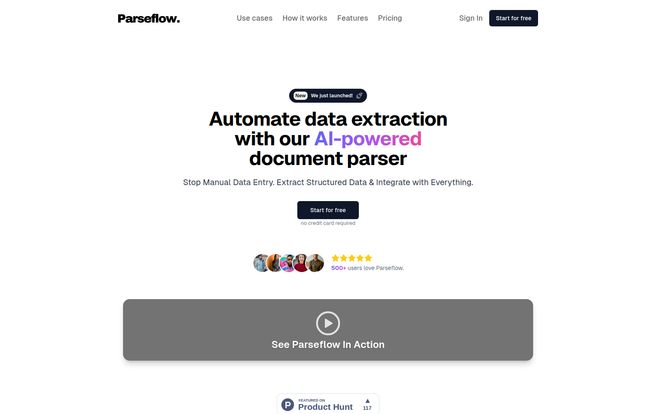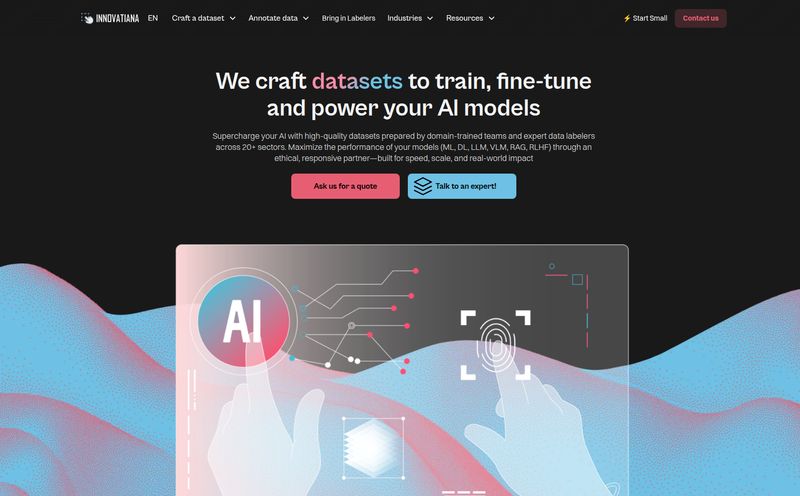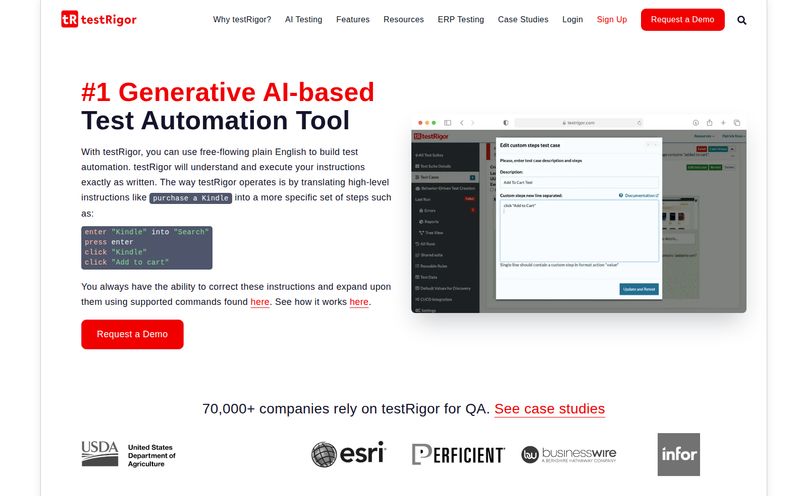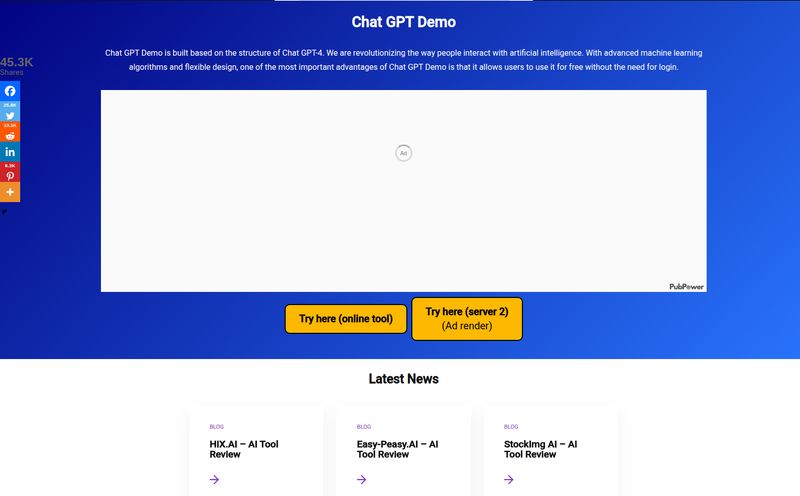If you've worked in any office job in the last twenty years, you’ve felt it. That slow, creeping dread that comes from a folder full of invoices, receipts, or—heaven forbid—handwritten forms. Data entry. It’s the digital equivalent of watching paint dry, only less satisfying. You stare at a document, then at a spreadsheet, then back at the document. Did I type that right? Is that a '1' or an 'l'? It’s a surefire way to kill productivity and a little piece of your soul.
For years, we've been promised a better way. OCR (Optical Character Recognition) was supposed to be the savior, but early versions were... let's say, finicky. They’d trip over a slightly crooked scan or a weird font. Now, with the AI boom in full swing, a new generation of tools is stepping up. One that recently slid across my desk (digitally, of course) is called Parseflow. It claims to automate data extraction with an AI-powered document parser. Big words. But does it actually work?
I’ve seen a lot of these tools. Some are brilliant, most are mediocre. So, I took it for a spin. Here’s the real talk.
So What is Parseflow, Exactly?
Think of Parseflow not just as a scanner, but as a smart assistant. Its job is to look at any document you throw at it—a PDF invoice, a JPG of a receipt from that lunch meeting, a scanned contract, even a CV—and instantly understand what it's looking at. It then pulls out the specific pieces of information you need (like the invoice number, total amount, customer name, etc.) and hands it to you in a neat, organized format.
It's the difference between giving someone a messy library and telling them to find a specific sentence, versus having a librarian who instantly brings you the exact book, opened to the right page. It aims to eliminate that manual, error-prone translation of data from document to database. A pretty big promise, right?
A Simple Three-Step Process
The whole workflow is refreshingly straightforward. No crazy learning curve. It basically boils down to this:
- Import: You get your documents into the system. This can be done by uploading files directly from your computer, forwarding an email with an attachment to a special Parseflow inbox (I love this for invoices), or even pointing it to a website URL to scrape data.
- Extract: This is where the magic happens. You tell Parseflow what data you’re looking for. For an invoice, you might want the 'Invoice Number', 'Due Date', and 'Total'. The AI then scans the document, finds that information, and pulls it out. It’s surprisingly good at guessing what you need, too.
- Export: Once the data is extracted, it’s yours to command. You can download it as a JSON or CSV file for your records. Or, and this is the really powerful part, you can automatically send it to other apps. Think of new invoice details going straight into QuickBooks, or lead information from a form being zapped directly into your HubSpot CRM.

Visit Parseflow
That's the gist of it. No complex coding, no need to train a custom model for days on end. You just show it the document and tell it what to grab.
The Features That Actually Matter
A features list can be boring, so let's skip the fluff. Here’s what stood out to me as a long-time SEO and process nerd.
The AI & OCR is Genuinely Smart
This isn’t your grandpa’s OCR. Parseflow’s AI can handle a lot. It can read text from scanned images, understand different layouts without you having to create a rigid template for every single vendor, and even decipher handwritten notes. Yes, really. I tested it with my own chicken-scratch, and while it wasn't 100% perfect, it was way better than I expected. For any business that deals with field reports or signed forms, this is a huge deal.
Integrations Galore
A tool like this is only as good as its ability to play nice with others. Being able to download a CSV is fine, but true automation comes from integration. Parseflow connects directly with heavy hitters like Google Sheets, QuickBooks, HubSpot, and Slack. But the secret weapon is its Zapier integration. With that, you can connect to over 6,000 apps. The possibilities are kind of dizzying. You can create workflows where an emailed invoice automatically creates a payment task in your project management tool and sends a notification to your finance channel in Slack. That’s real automation.
They Actually Respect Your Privacy
In an age where every click seems to be feeding some giant AI model, Parseflow’s approach is a breath of fresh air. They state clearly that they have end-to-end encryption for data in transit and at rest. They are GDPR compliant. And here's the kicker: they give you flexible data retention policies and promise they never use your data to train their AI models. This is a massive trust signal for any business handling sensitive client or financial information. You own and control your data. Period.
Let’s Talk About the Price Tag
Okay, here’s where Parseflow really breaks from the pack. In a world dominated by monthly and annual SaaS subscriptions, they've gone a different route: a one-time payment for credits.
I have to admit, I’m suffering from serious subscription fatigue. It feels like every service wants $10, $20, $50 a month, forever. Parseflow's model is pay-as-you-go. You buy a bundle of credits, and each credit lets you parse one document. When you run low, you just top up. No recurring bills. No paying for a service you didn't use that month.
Here’s a quick look at the pricing structure:
| Plan | Cost | Details |
|---|---|---|
| Trial Version | $0 | Includes 10 non-renewable credits, 30 days data retention, and access to all features to get you started. No credit card needed. |
| One-time Payment | Starts around $30 for 500 credits | Pay for a bundle of credits. The more you buy, the cheaper each credit gets. You can top up whenever you need to. |
This model is brilliant for small businesses, freelancers, or companies with fluctuating needs. If you only process 50 invoices one month and 500 the next, you're not stuck paying a high flat fee for the slow months. It's fair, transparent pricing, and I wish more companies would adopt it.
Where It Shines and Where It Stumbles
No tool is perfect. After kicking the tires, here’s my honest take. The good stuff is really good. The ease of use, the powerful AI, and the Zapier integration make it a strong contender for automating document workflows. The security focus is top-notch, and the pricing model is a massive win in my book. It just feels...fairer.
On the flip side, the pay-as-you-go credit system might not be ideal for massive enterprises that process tens of thousands of documents a day and prefer a predictable, fixed annual cost for budgeting. Also, while the Zapier integration is a powerhouse, some companies might be holding out for more direct, bespoke integrations, which Parseflow says are 'coming soon'. And, of course, your throughput is limited by the number of credits you have, which requires some management.
The Verdict: Is Parseflow for You?
So, should you give Parseflow a try?
If you're a small to medium-sized business, a freelancer, or a department manager drowning in manual data entry from invoices, receipts, or forms, then absolutely. The free trial is a no-brainer. You get 10 free credits to test it with your own documents and see if it works for your specific needs. It could genuinely save you hours of mind-numbing work each week.
For larger enterprises, it's still worth investigating, especialy for specific departments like accounts payable or HR. The cost-effectiveness and security features might just win over your finance and IT teams.
At the end of the day, Parseflow is a sharp, well-designed tool that tackles a very real and tedious problem. It's a sign that the promise of AI-driven automation is finally starting to deliver practical results for everyday businesses. It might just be the excavator you need to stop digging through data with a spoon.
Frequently Asked Questions
- What exactly can I do with 1 credit?
- One credit allows you to parse one document. So if you have 100 invoices to process, you'll need 100 credits.
- What kinds of documents can Parseflow handle?
- A whole lot. It supports invoices, receipts, contracts, resumes (CVs), purchase orders, bank statements, and even handwritten text. It works with common file types like PDF, PNG, and JPG.
- How secure is my data with Parseflow?
- Very. They use end-to-end encryption for all data, are GDPR compliant, and have a strict policy of never logging your data or using it to train their AI models. You can also set custom data retention policies for extra control.
- Can I integrate this with my existing software?
- Most likely, yes. It has direct integrations with popular tools like QuickBooks and Google Sheets, and its Zapier integration allows you to connect to thousands of other applications to create custom automated workflows.
- Is there really no subscription?
- Nope. It’s a one-time payment for a batch of credits. You use them as you need them and buy more when you run out. It's a pure pay-as-you-go system.



